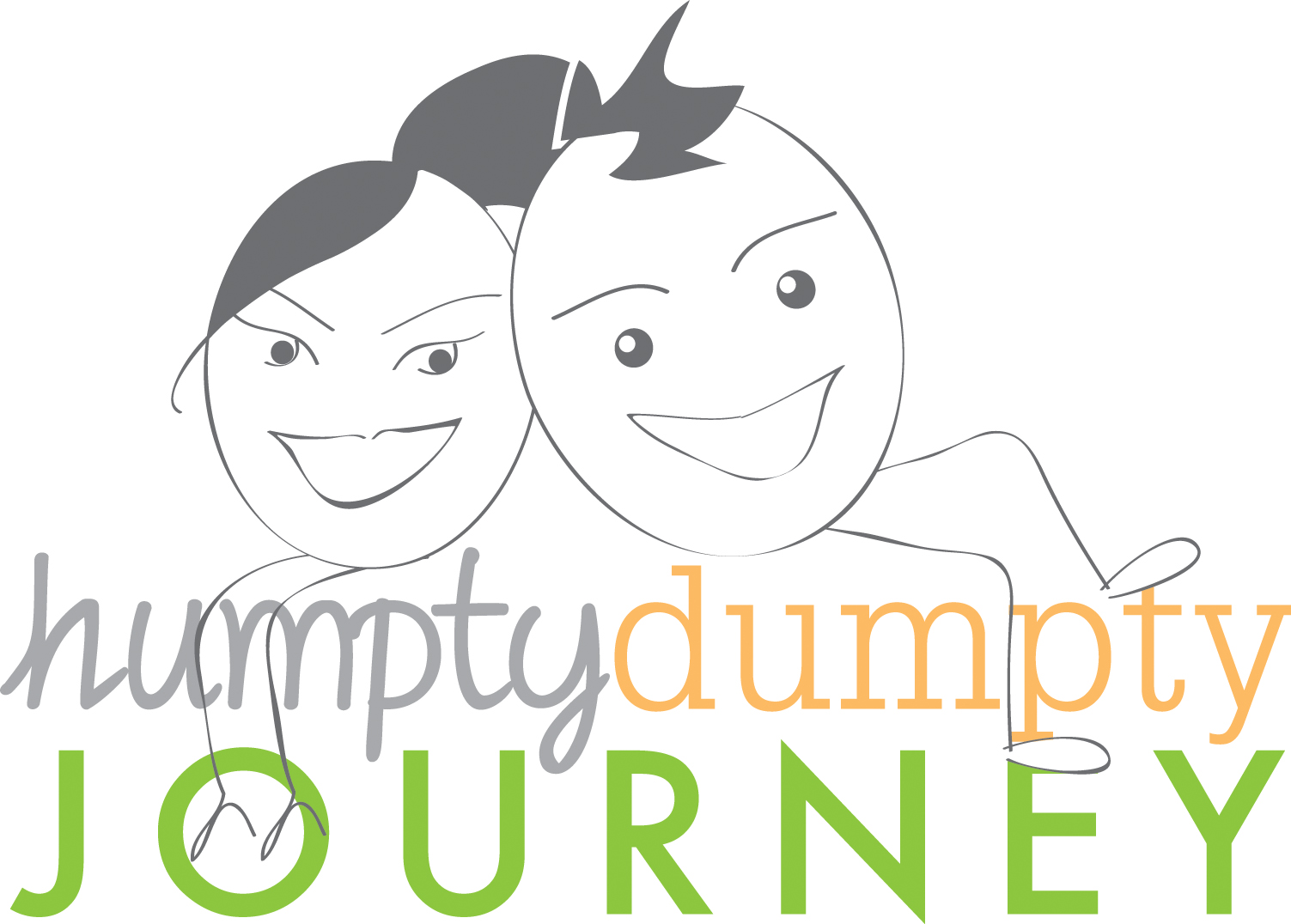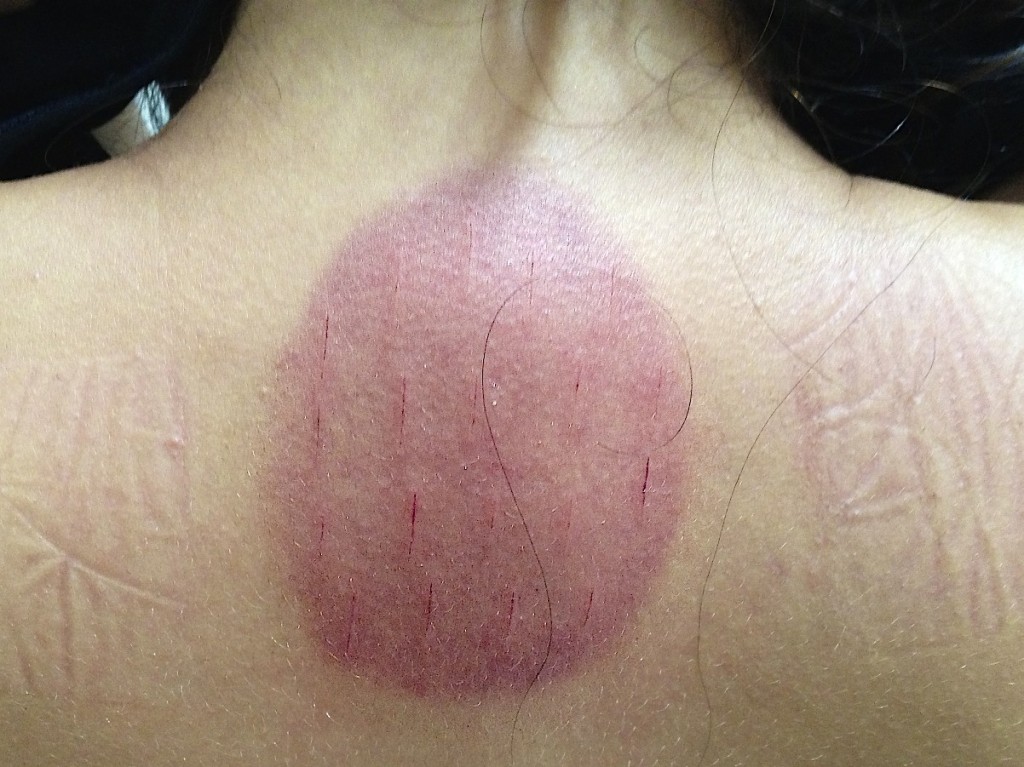I have deliberately placed the pictures at the end of this post. Please be warned they are graphic.
Picture this. Dumpty was lying on his stomach in the bed at his cousin’s house in Karachi. He only had on boxers. I listened to Dumpty’s cousin softly reciting the Koran. I stared at the six plastic clear cups, a box of tissues, and a suction pump on the trolley. His cousin was poised to slice my husband’s back dozens of times with the blade she was holding in her right hand. I smelled the incense burning in the room. My mouth was dry. Muscles tense. I held Dumpty’s left hand in mine. Dumpty was about to get his first hijama.
I was quite impressed with Dumpty’s cousin (calling her DC) when she told me about her first published book on Hijama but I had no clue what Hijama was. I thought it was some common Arabic or Islamic term that everyone must know and was too embarrassed to ask about it. But the curiosity got the best of me and I finally asked DC, “What, exactly, is Hijama?” I was expecting to get a lecture on the Koran. I was wrong.
“Hijama removes toxins from the body and the book is about how to do hijama and what all the benefits are. I’ve done it on close to a 1,000 people already,” she said.
Hmmm, that sounded promising. “So, how do you do it?” I asked.
“It’s easy. I only do it on particular days of the month according to what the Prophet recommended. But basically I use a blade to make small superficial cuts on where the blockages are and then extract the dirty blood out,” DC said.
Hmmm, that sounded disturbing. However our curiosity was piqued and we drilled her with dozens of questions. After doing some Internet research on our own we decided to get it done. Luckily, the dates aligned for us the following day. We had nothing to lose but some blood. How bad could it be?
The Arabs and Muslims call it Hijama and the Chinese call it Cupping. Hijama is the technique of using plastic or glass cups and a suction device to draw out stagnant, congested and “dirty” blood from certain points of the body (lymph nodes). By removing these blockages from the body, practitioners believe the patient will have improved blood circulation, restored energy, better digestion, and reduced illness. In a nutshell, it’s a detoxification method.
The first documentation of Hijama was found in the Ebers Papyrus, which was written about 3500 years ago and then by the Chinese in 1000 B.C. Even the Greeks, including Hippocrates, used cupping as a way to cure internal diseases. The cupping method was made popular amongst the Muslim world after the Prophet Muhammad got it done himself and declared it a good practice for others. You can learn more about the history and the benefits of Hijama or Cupping here.
So back to the story. Dumpty had been feeling ill that day to begin with, but decided to push on with it. Our flight to Bangkok was departing the following day, so it was either now or never. DC, with lightning speed, made two dozen cuts on his back, then immediately covered the area with two cups and then extracted blood using the suction pump. It was utterly gross. Slowly I saw gooey black blood collecting in the cups. Once the cups filled up, she cleaned the area with tissue and then repeated the pumping process. Dumpty got nauseous and puked into the trash can but that did not slow DC down in the slightest. DC repeated the process several more times, including on the back of his knees, until the blood was no longer black. An hour must have passed by. Dumpty felt utterly weak afterwards but otherwise fine.
It was now my turn to go under the blade. To be quite honest, the scariest part was the anticipation of the cuts but that actual cutting wasn’t painful. They felt like little scratches. I didn’t feel nauseous at all and the overall experience was exotic, a bit disturbing and thrilling. I am glad I did it, but I didn’t feel dramatically different.
I guess a blood test before and after the procedure would have been more telling. In fact, the next day, as we were saying our goodbyes, we met with Dumpty’s aunt, who happened to have her doctor over to do some testing on her and her friends. We asked him his opinion; he scoffed and proceeded to lecture us on the foolishness of hijama. There is no doubt, the traditional Western medical community is very skeptical on the medical benefits of Hijama. In fact, both Dumpty and I remain skeptical. There are many anecdotal stories of Hijama helping people but we did not find much in our quick Internet searches in terms of hard medical benefits. What did scare me was how my back looked after. I had some bruising from the cupping (which got worst over the following days) as well as scars from the cuts. Not as bad as the ones Dumpty had on the back of his legs, but far from attractive as we were about to visit the beaches of Thailand. Would I be scarred for life?
The answer is no. But the experience is now chiseled into my memory forever.

This is Dumpty’s back. He got a total of 6 Hijama points done, including two very painful points behind his knees. Ouch.



okay – you guys weren’t kidding. though i am very pleased you didn’t post photos of black blood. had a great time with you both last night! hope you slept well and talk soon.
hey dumpty, it appears hijama includes a back shave – so, you at least got that benefit!!
That’s one way of looking at it. ha